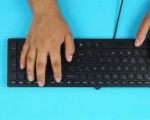How to Boot from USB: A Step-by-Step Guide for Beginners
- 1. What Is USB Booting and Why Is It Important?
- 2. Prerequisites for Booting from USB
- 3. Step-by-Step Guide to Boot from USB
- 4. Common Issues When Booting from USB and How to Solve Them
- 5. Personal Experience: Booting from USB
- 6. How Ninja Stik Can Assist You with USB Booting
1. What Is USB Booting and Why Is It Important?
USB booting refers to the process of starting up your computer from a USB drive instead of your computer's internal hard drive. This process is essential for a variety of reasons. It is commonly used for installing operating systems, running diagnostic tools, or fixing a system that won't boot normally from the internal drive.
Understanding how to boot from USB is a crucial skill for any computer user, whether you're installing a new OS, recovering data, or troubleshooting your system. This guide will help you understand the USB booting process and teach you the steps to successfully boot from a USB drive on your system.
2. Prerequisites for Booting from USB
Before you can successfully boot from a USB, there are a few key things you'll need to prepare:
- A Bootable USB Drive: First and foremost, you need a USB drive that is properly configured to boot an operating system or tool. This means the USB drive must contain a bootable image of the software or operating system you want to use.
- BIOS/UEFI Access: You need to access your computer's BIOS or UEFI settings to change the boot order, allowing the USB drive to be selected as the primary boot device.
- Compatible USB Ports: Ensure that your computer has available and functional USB ports for connecting the bootable USB drive. USB 3.0 ports tend to be faster, but USB 2.0 ports are also compatible for booting.
Once these prerequisites are in place, you are ready to proceed with booting from USB.
3. Step-by-Step Guide to Boot from USB
Now that you're prepared, here’s a simple, step-by-step guide on how to boot your system from a USB drive:
- Insert the Bootable USB: Plug the bootable USB drive into an available USB port on your computer.
- Enter BIOS/UEFI Settings: Power on your computer and immediately press the designated key (often F2, F12, or Delete) to enter the BIOS or UEFI settings.
- Change Boot Order: In the BIOS/UEFI menu, navigate to the "Boot" section and set the USB drive as the primary boot device. This will ensure that your computer boots from the USB drive first.
- Save and Exit: Save the changes you made in the BIOS and exit. Your computer will restart.
- Boot from USB: Upon restart, your computer should boot from the USB drive. Follow the on-screen instructions to install the operating system or perform the necessary action you need.
That’s all there is to it! This process will allow you to boot from a USB drive on most systems, enabling you to use the desired software or OS.
4. Common Issues When Booting from USB and How to Solve Them
Although booting from USB is usually straightforward, there are a few common issues that can arise. Here are some common problems and their solutions:
- USB Not Recognized: If your computer doesn’t detect the USB drive, make sure it is properly formatted and contains a bootable image. Also, check that the USB is plugged into a functional port.
- Incorrect Boot Order: If your computer doesn’t boot from the USB, check that the boot order is set correctly in the BIOS settings. Ensure that the USB is prioritized before the internal hard drive.
- UEFI/Legacy Boot Mode Issues: Some systems may require you to switch between UEFI and Legacy boot modes. If your USB drive is not booting, try adjusting this setting in your BIOS/UEFI.
These solutions will help you address most issues when booting from USB. Ensuring the settings are correct and the USB is properly configured is key to a successful boot.
5. Personal Experience: Booting from USB
I remember when I first needed to boot from a USB on my laptop. It seemed a little intimidating at first, but once I followed the steps to change the boot order in the BIOS, the process was much simpler than expected. I was able to install a new operating system on my laptop without any issues. The freedom and flexibility that comes with booting from USB have since made it a go-to method for me when performing system repairs or installations.
6. How Ninja Stik Can Assist You with USB Booting
If you’re looking for an easy way to manage your USB booting process, Ninja Stik offers great tools that help simplify the process. With Ninja Stik, you can quickly create bootable USB drives and ensure that your system boots seamlessly, even if you’re using advanced features like UEFI or Legacy boot modes. Whether you’re installing a new operating system, running diagnostics, or performing repairs, Ninja Stik can help streamline your experience.
Visit Ninja Stik for more information on how it can improve your USB booting process.





























